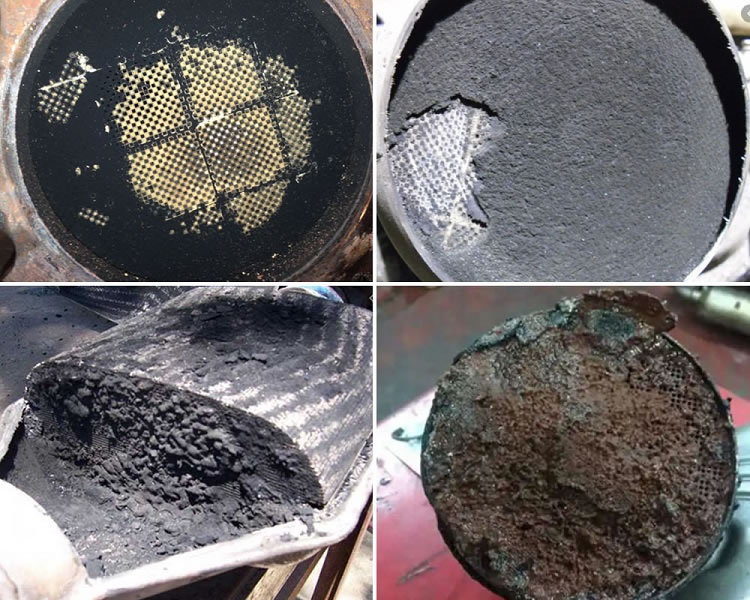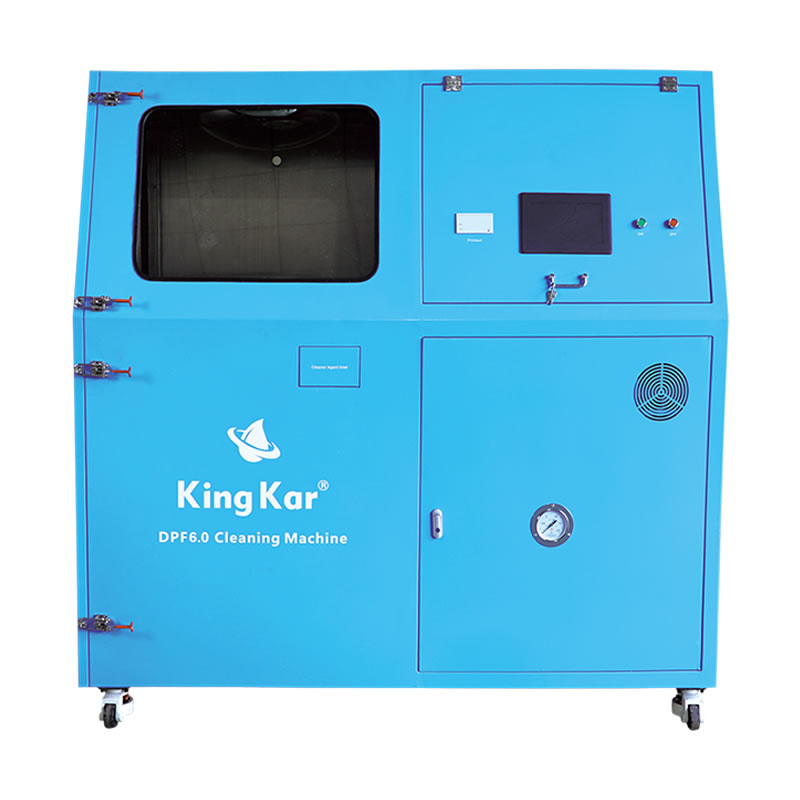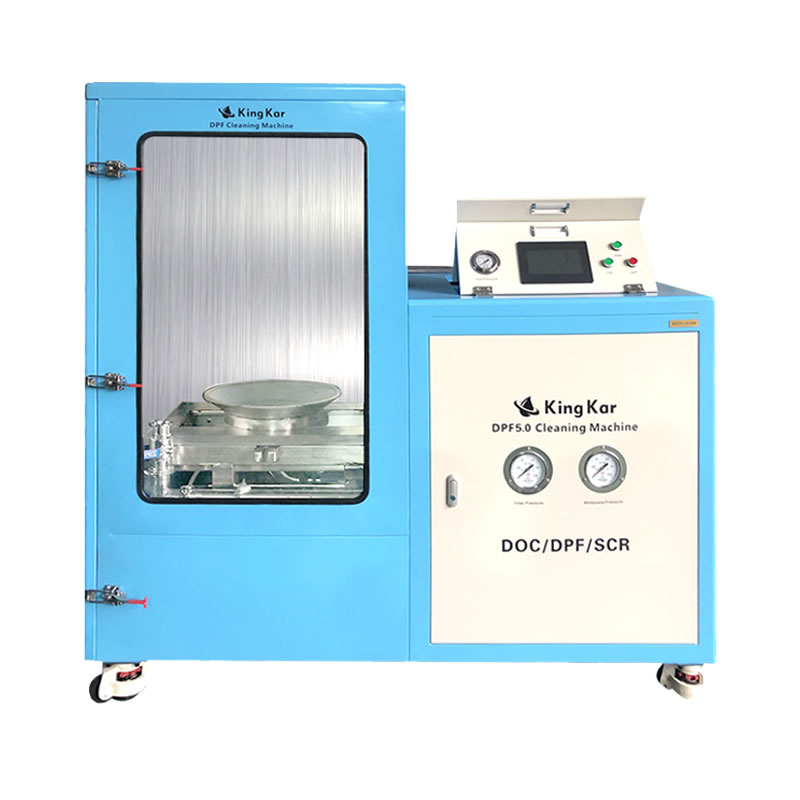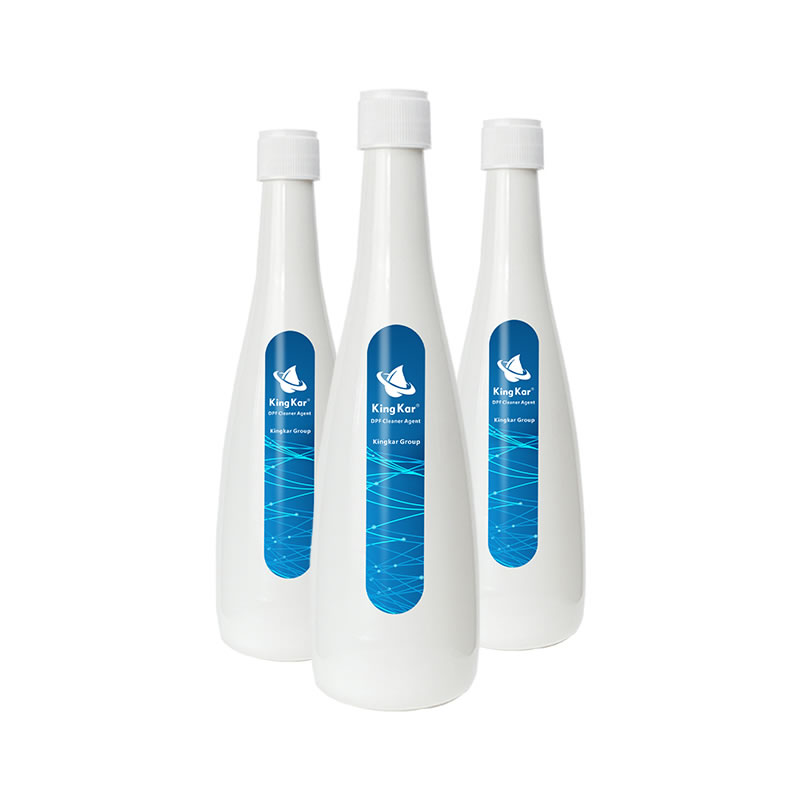Why is DPF blocked?
To reduce emissions, diesel cars are fitted with a Diesel Particulate Filter (DPF) – something that filters and catches soot particles. Most DPFs will automatically clear as they’re used but on rare occasions, in specific circumstances, they may get blocked and require manual cleaning.

In normal use, a DPF cleans or regenerates itself by reaching a sufficient temperature to burn off the excess soot. Each vehicle will have a different regeneration cycle and you should be able to find information on this in your vehicle’s manual. Usually, it requires driving the vehicle on a motorway for a short period of time in order to produce enough heat for the regeneration to be successful.
If the vehicle is being used solely for short journeys or as a result of certain driving conditions, for example, you only drive at low speeds, this regeneration cycle may not have the opportunity to complete and as a result, the Diesel Particulate Filter will become blocked.
If your DPF has not regenerated due to your driving style not allowing it to regenerate, then this would not be considered a fault under the manufacturer’s warranty. However, it might be that if a diesel car is not suitable for you due to your use of the vehicle, you can raise a complaint against the seller.
The followings are the summerise of the common causes of the blockage DPF :
- Frequent short trips where the engine cannot reach the optimal operating temperature.
- Use the wrong engine oil-low ash, low sulfur engine oil must be used on vehicles equipped with DPF.
- EGR valve problems, such as stuck or fouling of EGR components-EGR failure will contaminate oily “wet” residues, resulting in excessive smoke and dust at the air intake.
- Turbine failure-engine oil enters the exhaust hood through the turbine seal, and the oily residue of combustion enters the DPF, resulting in an excessive dust load.
- The additive tank (if fitted) is too low or empty-this will fail any attempted DPF regeneration and may cause premature blockage.
The drawback to all of this is that the DPF needs to be cleaned regularly. The soot particles attach themselves to the lining of the DPF while the engine is running. At the same time, the filter is slowly clogging with the very particulates that it’s designed to remove from the exhaust. This process of cleaning the DPF is done through a process called regeneration.
Diesel Particulate Filter (DPF) Regen
DPF regen happens when the trapped particulates heat up enough to combust and turn to ash. The built-up soot is thereby removed as gaseous carbon dioxide. Regeneration may happen in one of three ways: passive, active, or forced.
Passive Regeneration
Passive regeneration happens automatically. Once the exhaust temperature reaches a certain point, for example, while driving at high speeds, the built-up matter in the DPF turns to ash. No active changes in engine operation are involved. Diesel trucks on a heavy-duty cycle, for example climbing a lot of hills, should have no problem passively regenerating their DPF. Under these conditions, soot burns off as fast as it is generated.
Active Regeneration
Active regeneration happens when changes in engine operation are required to get the ECM to burn out, some catalyst is introduced, or both. This is common among trucks with a lighter-duty cycle because soot accumulates while idling or going slowly through traffic.
One method involves the ECM tweaking engine parameters to increase the exhaust temperature. Then it switches on an extra fuel injector that shoots fuel into the exhaust stream. This fuel reacts with a catalyst and burns the built-up soot out of the DPF. Newer engines allow parked regeneration.
During active regeneration, you may notice the following symptoms:
- Cooling fans running
- Increased idle speed
- Deactivation of automatic Stop/Start
- A slight increase in fuel consumption
- A hot, acrid smell from the exhaust.
- Engine note change
If the regeneration is unsuccessful due to an insufficient driving cycle the extra fuel injected into the cylinders will not burn and will drain into the sump. As a result, oil quality will deteriorate and the oil level will rise. Most DPF equipped engines will have an oil quality/viscosity sensor but it is important that you check that the oil level does not increase above the maximum level on the dipstick as diesel engines can run on their own oil if the level is excessive – often to the point of destruction.
If you ignore the diesel particulate filter warning light and keep driving in a relatively slow, stop/start pattern, soot will continue to build up until around 75% when you can expect to see additional dashboard warning lights come on. At this point driving at speed alone will not be enough to clear the filter and you will need to take the car to a dealer for “forced” regeneration.
Forced Regeneration
When active regen requirements aren’t met, or when soot levels rise to a certain point, a forced regeneration may be required. A diagnostic tool is required to force regeneration. Continuing to operate the vehicle at this stage can ruin the DPF and cause other damage.
But even a forced regen will not work if soot levels have grown so high they have overwhelmed the DPF. At about 85% soot capacity and above, the DPF will need to be either removed and cleaned, or replaced. A new filter can cost $5,000 or more.
Cleaning
The DPF must be cleaned every 150,000 to 300,000 miles to remove accumulated ash. This ash buildup is not necessarily related to regens but is most often due to sulfated ash in the engine oil. The filter must also be cleaned if a fuel injector or turbo problem causes contamination with engine oil or non-combusted diesel. This contamination causes unacceptable back pressure.
Cleaning methods include air blasting, the use of de-ionized water, and a vacuum-like system. Cleaning must be done very carefully so as not to damage the filter. The particulate matter removed must be carefully handled so technicians are not exposed to its extremely fine contaminants.
Timewise, cleaning a DPF should be quick enough to be accommodated during an oil change.
If just blocked, the most rational, intelligent people would be able to choose to clean the DPF. It’s a cost-effective alternative to buying a replacement. Cleaning DPF can keep your DPF filter trouble-free and your wallet intact. Kingkar DPF cleaning machine is an innovative solution to clean all filters of diesel vehicles. It uses water flushing with the cleaner agent and high-pressure air purging work alternately, three treatments together, so it can be 100% clean and will not cause a secondary blockage. Impeccable operation and usefulness
At KingKar we are accustomed to engineering solutions with performance and safety in equal measure. DPF5.0 and 6.0 is an exciting solution that provides safety for a workshop, automation for productivity, and full flexibility to do a clean on the state of the DPF.
We believe that neither safety nor performance should be compromised.



